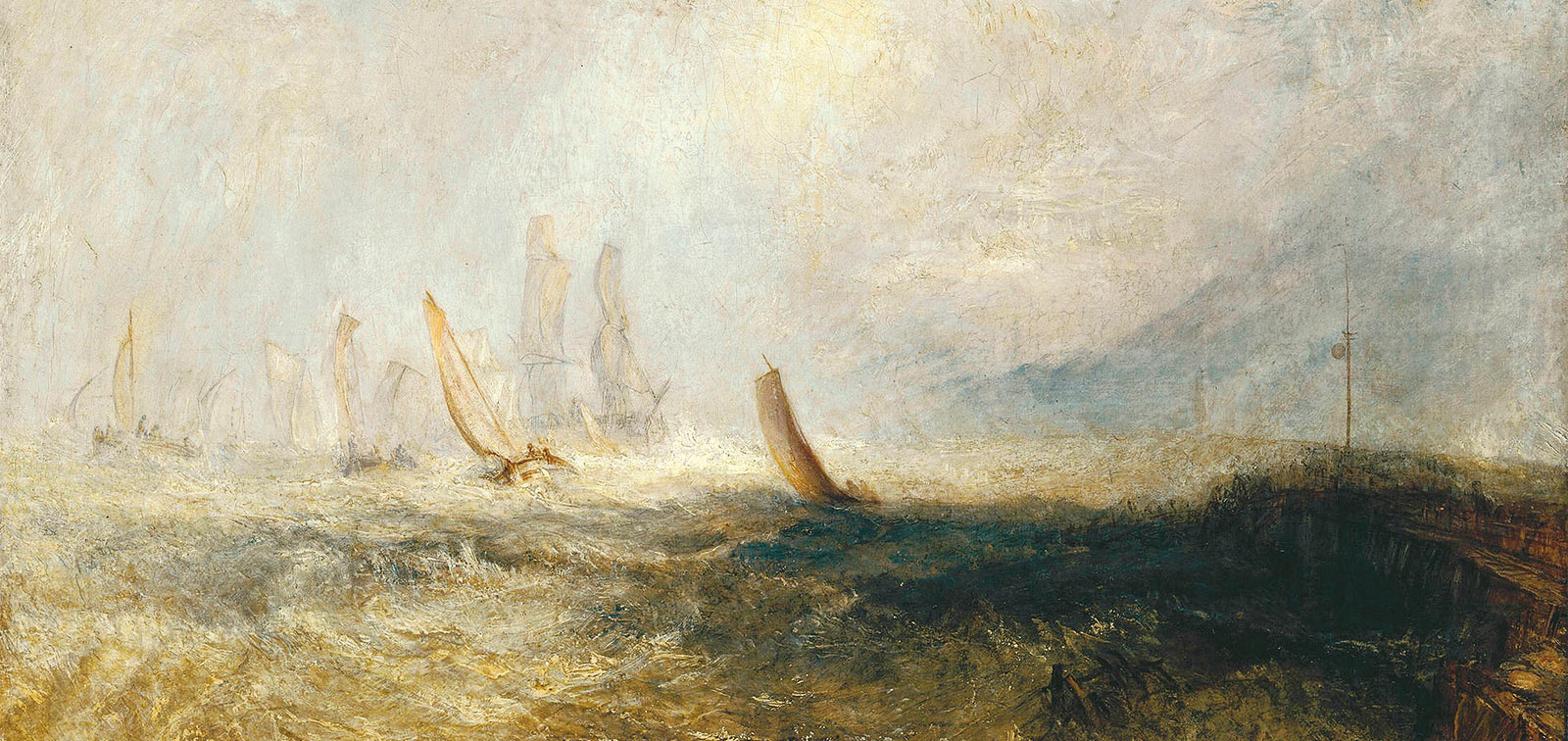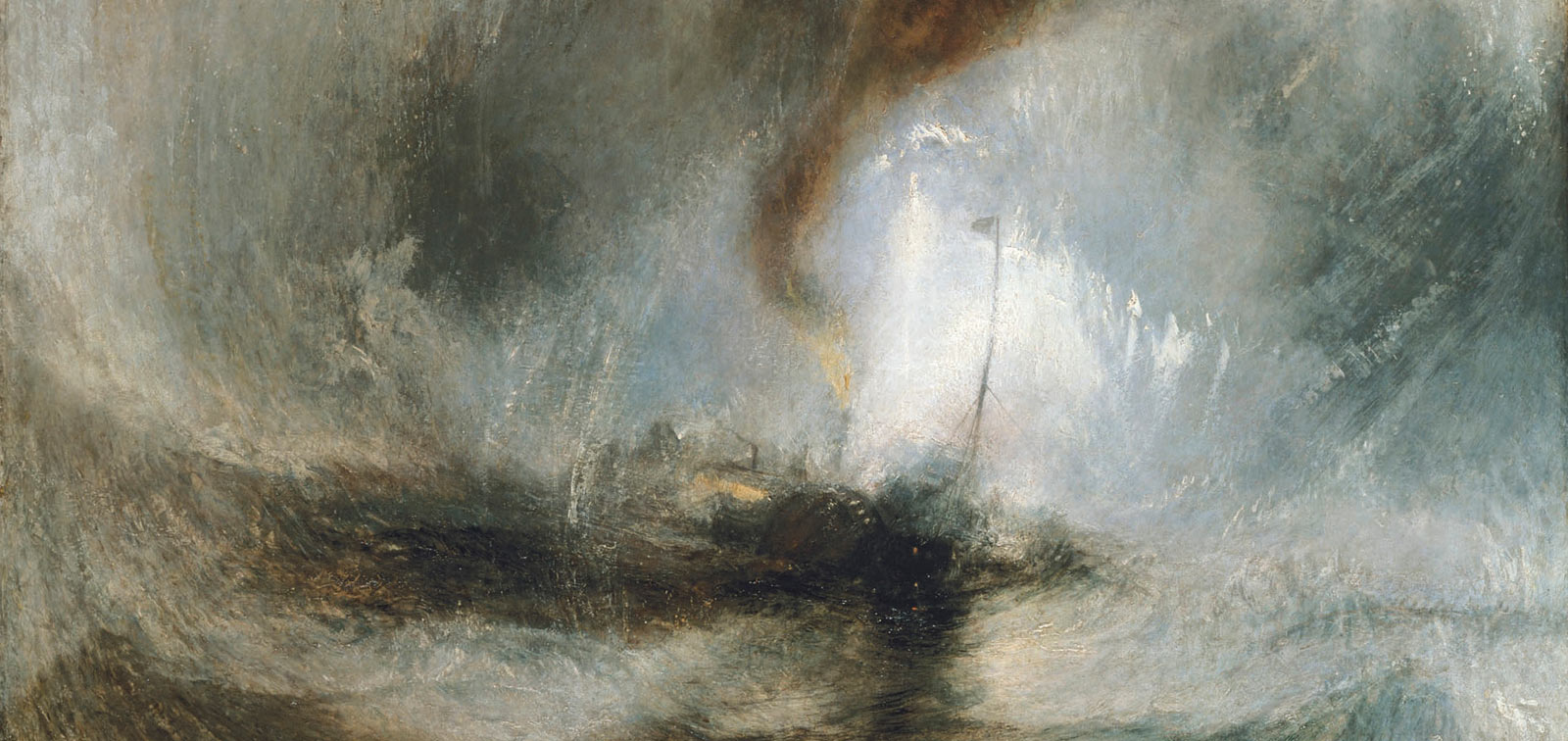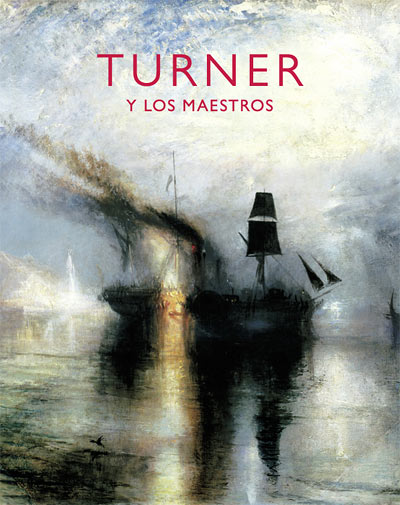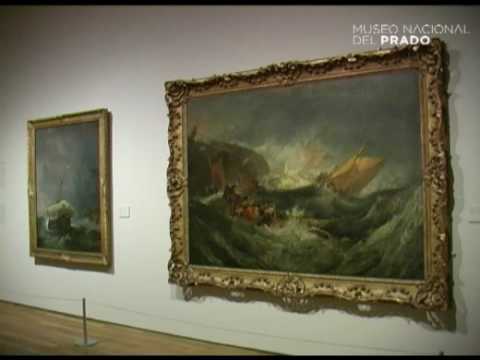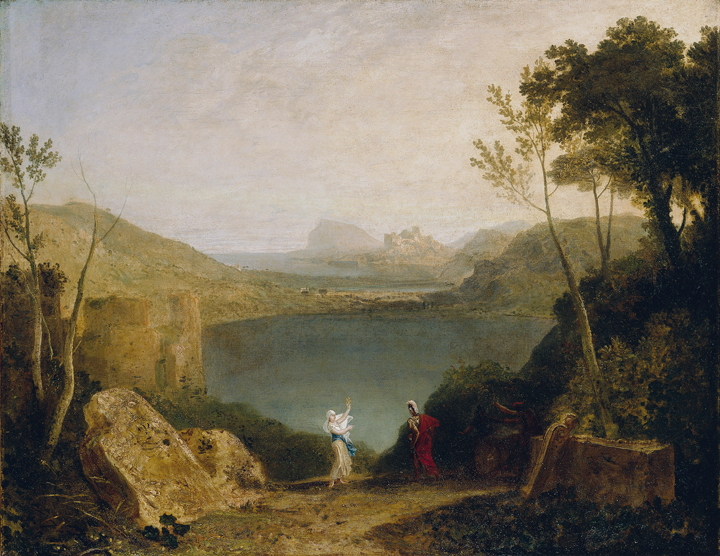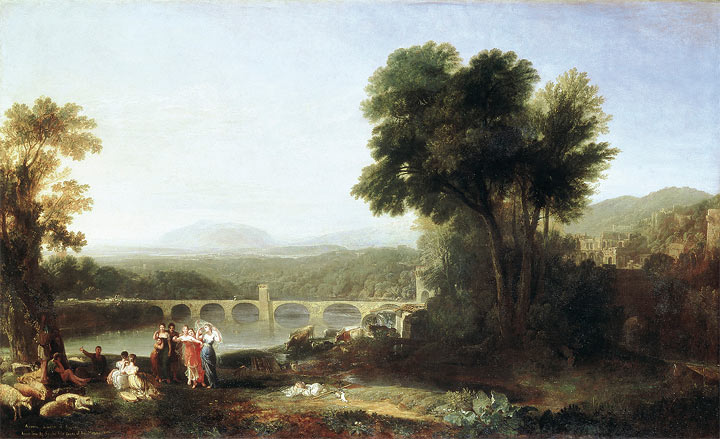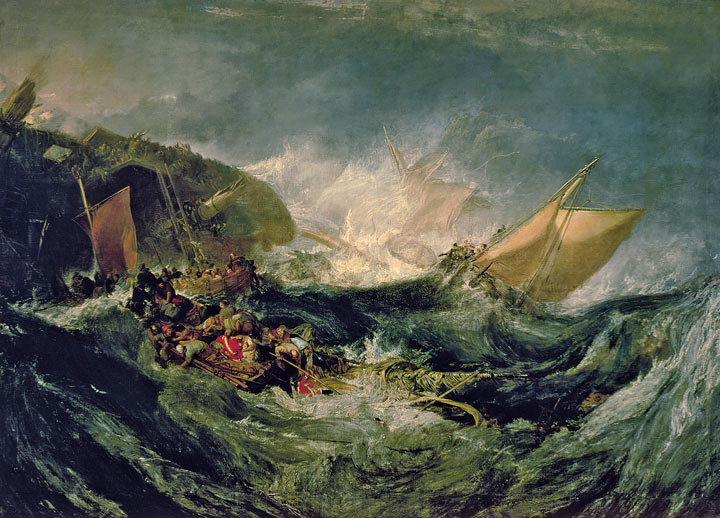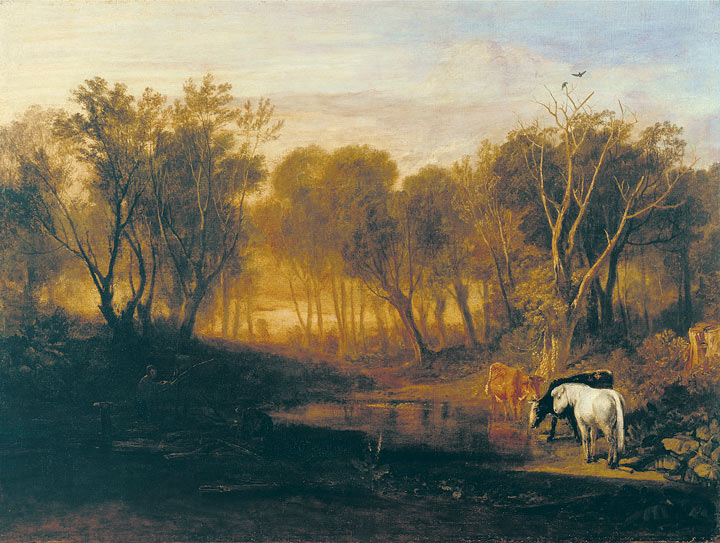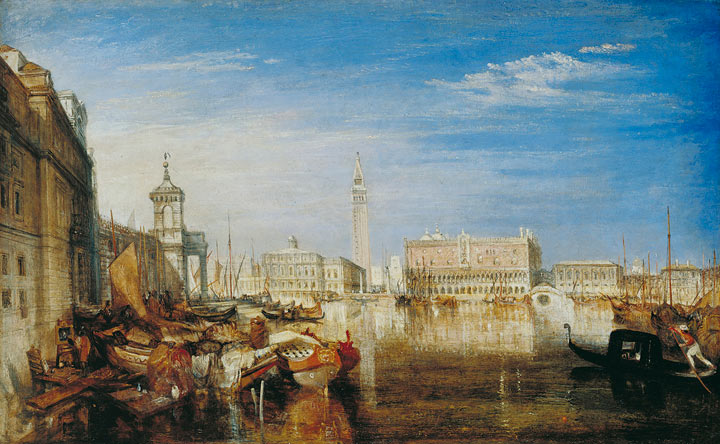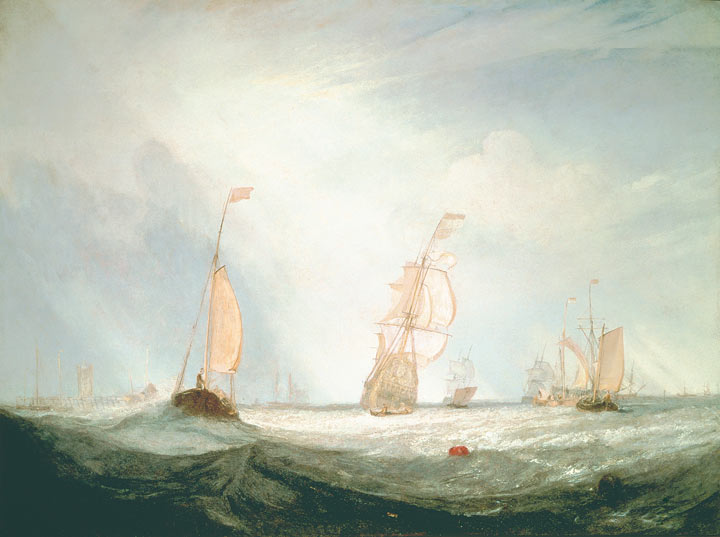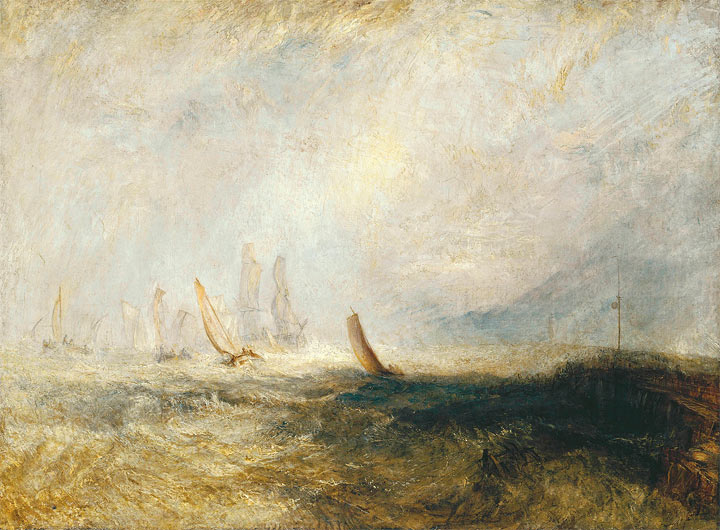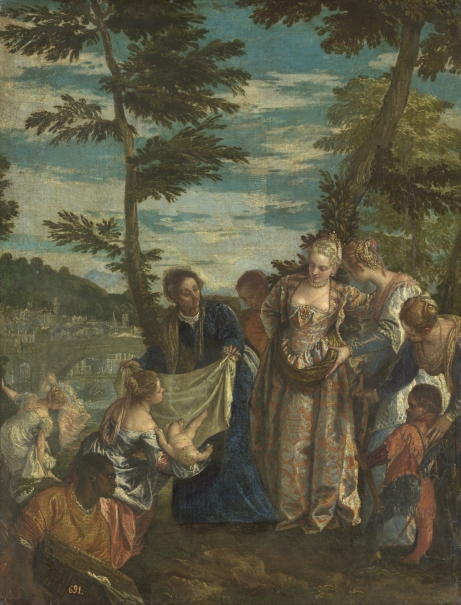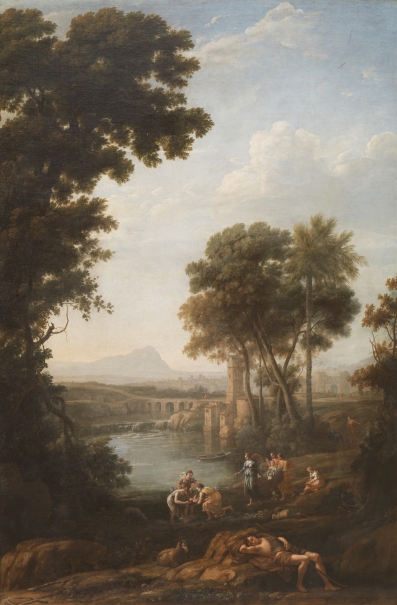1775 Turner was born in London on 23 April, son of William, a barber and wig salesman, and Mary Marshall, a housewife who died in a mental asylum when Turner was 29.
1786 Turner signed his first known drawings.
1789 He entered the Royal Academy as a student. Its director, Sir Joshua Reynolds (1723-1792) encouraged his students to "study the masterpieces of your predecessors."
1790 Exhibited his first watercolour at the Royal Academy.
1792 Travelled to Wales.
1794 Started to work with Thomas Girtin (1775-1802) at Dr Thomas Monro’s house.
1796 Exhibited his first oil painting, Fishermen at Sea, at the Royal Academy.
1798 During a trip to Wales, Turner visited the birthplace of Richard Wilson (1713-1782), the English landscape artist who most influenced him at this period.
1799 In William Beckford’s collection Turner saw paintings by Claude brought back from Italy.
1800 The Duke of Bridgewater commissioned him to paint a marine view as a pair to a work by Van de Velde.
1801 First trip to Scotland.
1802 Turner was made a member of the Royal Academy. He made his first trip to Europe, visiting Switzerland via France. In Paris he visited the Louvre, where he studied Titian and Poussin.
1804 Turner’s mother died in a mental asylum. The artist opened his own private gallery.
1807 Turner was appointed Professor of Perspective at the Royal Academy. He published the first part of his Liber Studiorum, which he continued until 1819.
1809 He spent the summer at Petworth House (Sussex), residence of the Earl of Egremont.
1811 Turner gave a series of lectures on perspective.
1815 At the Royal Academy he exhibited Crossing the Brook and Dido building Carthage. The Rise of the Carthaginian Empire.
1817 Turner travelled to Belgium, Holland and Germany.
1819 He made his first trip to Italy where he visited Venice, Rome, Naples and Florence. Seconded by the sculptor Canova, Turner was made an honorary member of the Accademia di San Luca in Rome.
1821 The artist travelled to France where he visited Paris, Rouen and Dieppe in order to illustrate The Rivers of France.
1824 He travelled along the Meuse and the Moselle in Luxembourg and northern France.
1825 Turner visited Holland.
1826 He travelled in Normandy, Brittany and along the Loire.
1828 Turner made his second visit to Rome where he exhibited his work. En route, he passed through Paris, Lyons, Avignon and Florence.
1829 He returned from Italy via Turin. Turner visited the Channel Islands, Normandy and Paris. Death of his father. He probably began his trips to Margate that year, staying at the house of Sophia Caroline Booth, with its views of the port.
1832 Travelled to France.
1833 Travelled to Germany, Austria and Venice.
1835 Travelled to Demark and Germany, where he visited the museums in Dresden and Berlin. Visits Bohemia.
1837 Turner’s period as Professor of Perspective at the Royal Academy came to an end. He painted Interior at Petworth, possibly in relation to the recent death of Lord Egremont.
1839 Second trip along the Meuse and the Moselle and around Luxembourg.
1840 Turner met John Ruskin. He read Eastlake’s translation of Goethe’s Theory of Colours.
1843 Turner exhibited Shade and Darkness: evening of the Deluge, and Light and Colour (Goethe’s Theory): morning after the Deluge.
1851 Turner died in his house at Chelsea aged 76. He was buried in Saint Paul’s Cathedral.

